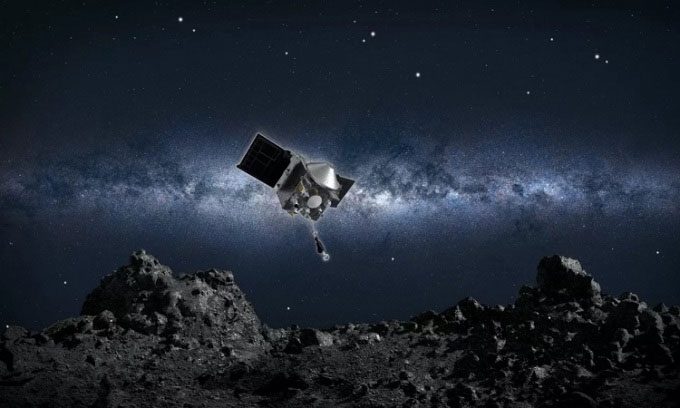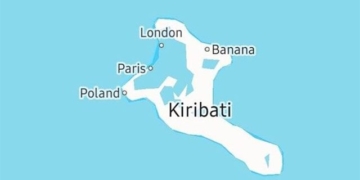After 6 years and over 320 million kilometers, NASA’s OSIRIS-REx spacecraft is set to return to Earth from the primitive asteroid Bennu.
In less than a year, on September 24, 2023, the container holding rock and dust samples from the mission will be dropped onto the surface of Earth while the spacecraft heads to its next destination. At a meeting of the American Geophysical Union (AGU) taking place this week in Chicago, planetary scientists discussed the next steps for the samples that the OSIRIS-REx spacecraft is bringing back.

Simulation of the OSIRIS-REx spacecraft collecting asteroid samples. (Image: NASA).
The OSIRIS-REx spacecraft was launched in 2016 and spent nearly 3 years exploring Bennu, an ancient asteroid whose orbit crosses that of Earth. This celestial body is of particular interest for both scientific research and planetary defense. Bennu is a type of asteroid that has not changed much since its formation, making it a pristine sample from the early solar system. However, due to its Earth-crossing orbit, Bennu also poses a threat to humanity. Understanding its nature is crucial for future missions aimed at diverting the asteroid from its path towards Earth.
The OSIRIS-REx spacecraft orbited Bennu, capturing images and other data about the asteroid before approaching the surface to use its small sampling arm. The device, named TAGSAM, collected 150 – 350 grams of asteroid material, far exceeding the original goal of 60 grams. In fact, TAGSAM gathered so much material that debris began to spill out of the container.
From the moment the sample container enters Earth’s atmosphere to its landing in a flat area in Utah, the journey lasts only 13 minutes. The top priority after the container lands is to transport it immediately to a cleanroom to ensure that the samples remain uncontaminated by Earth dust. Within a few days, the samples will be flown to their final storage location at the Johnson Space Center for further study.
Seventy-five percent of the samples will be preserved for future scientists, while the remaining 25% will be analyzed and classified by the OSIRIS-REx mission team. Preliminary analysis results will be announced on October 2, 2023. Although the samples are on their way back to Earth, the OSIRIS-REx spacecraft will only release the container before continuing its journey to the inner solar system for an extended mission to the asteroid Apophis.
The spacecraft will not collect additional samples but will closely observe the asteroid. OSIRIS-REx is expected to reach its destination just one week before flying extremely close to Earth, studying this celestial body for about 18 months.





















































